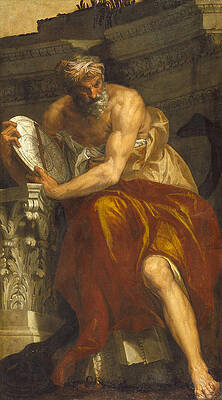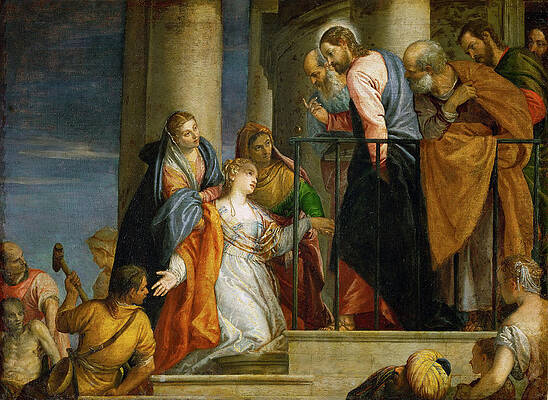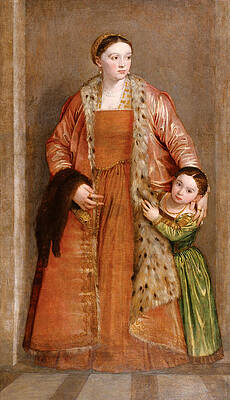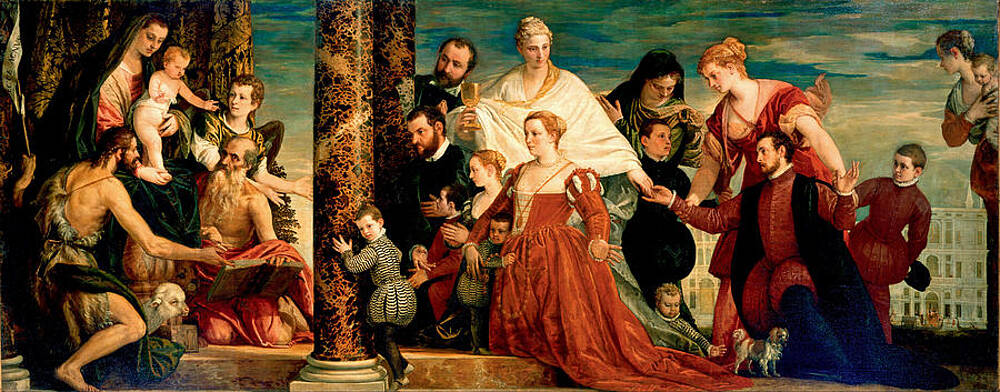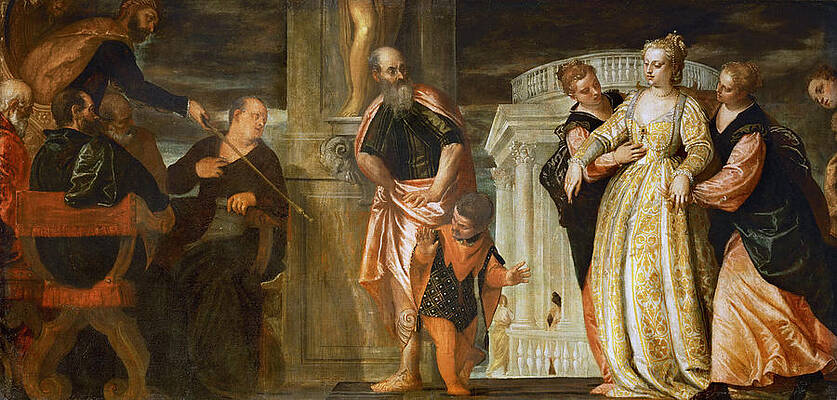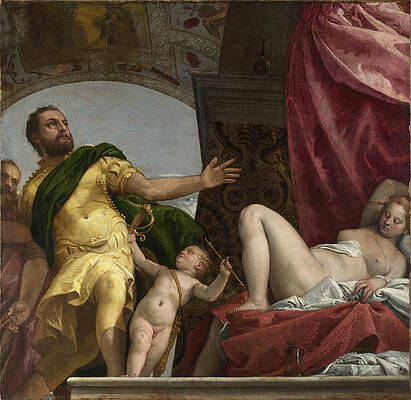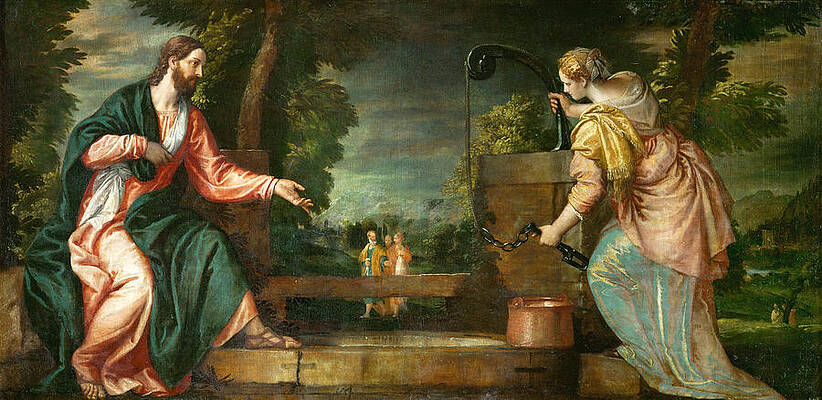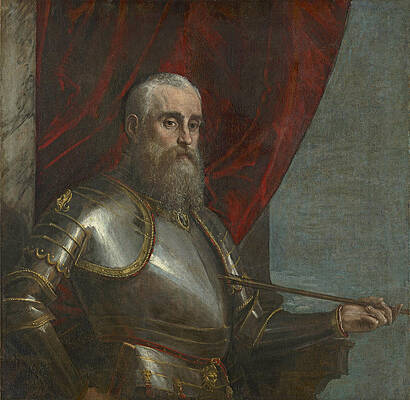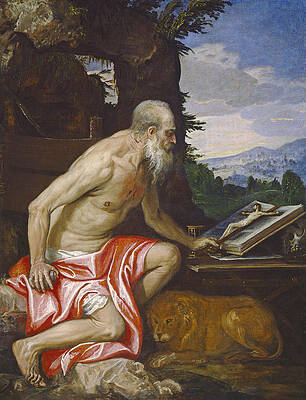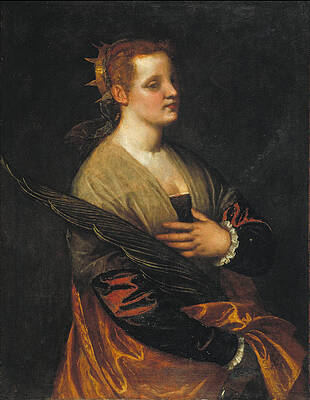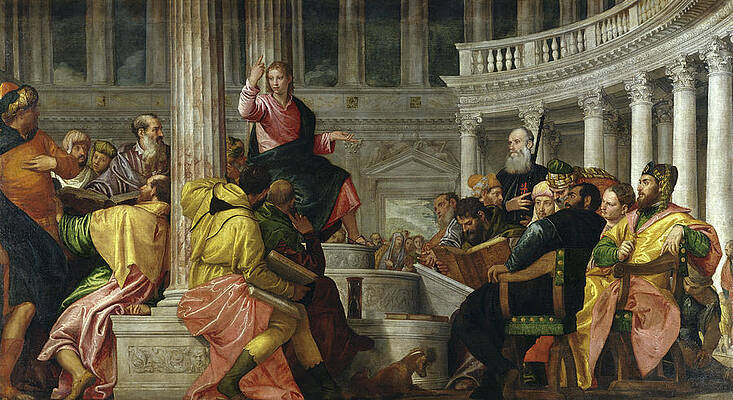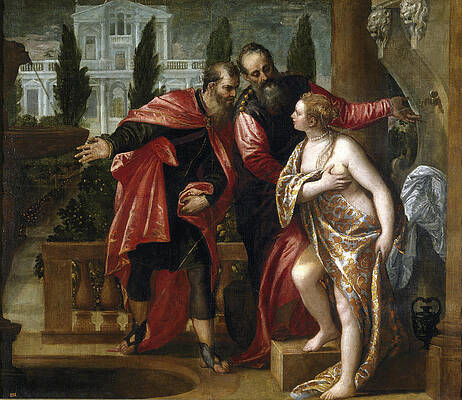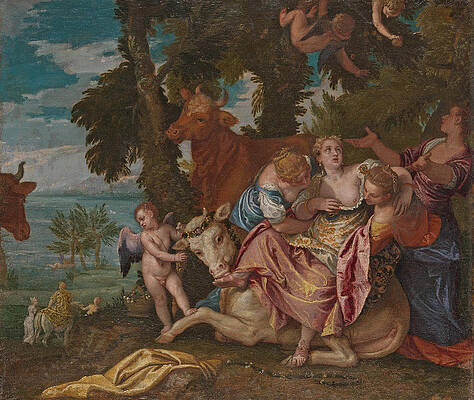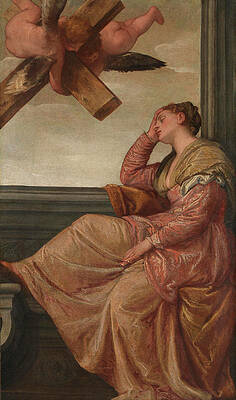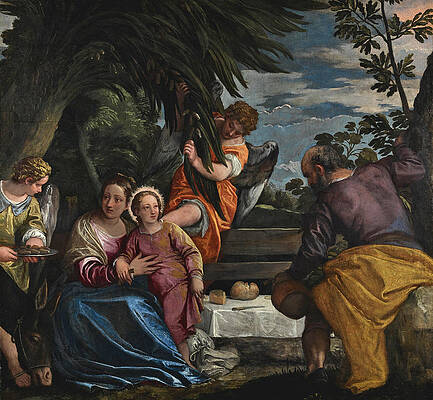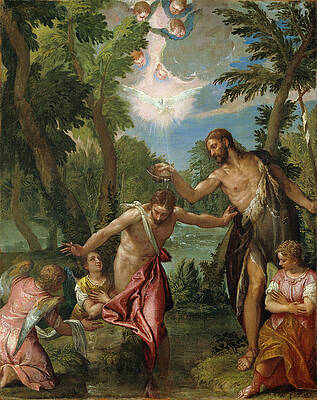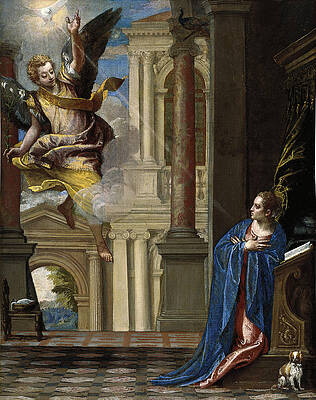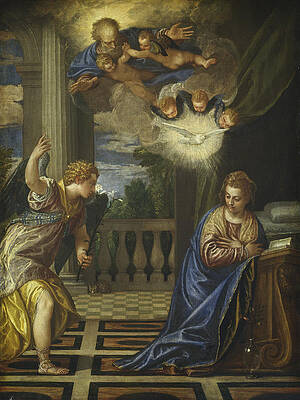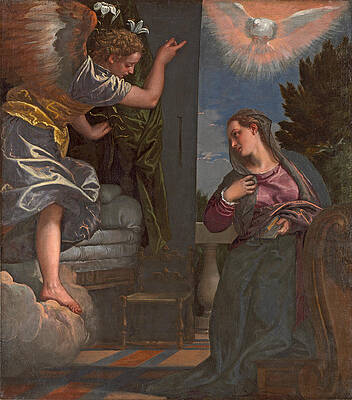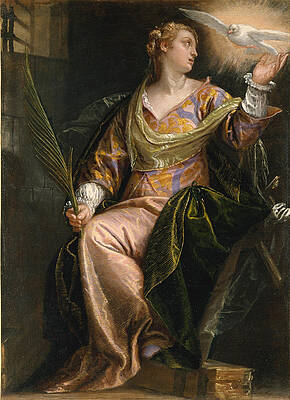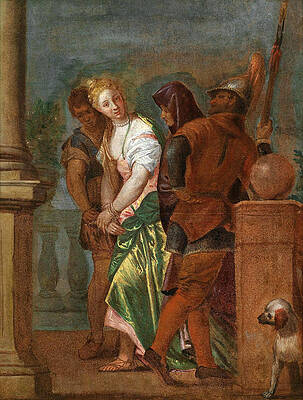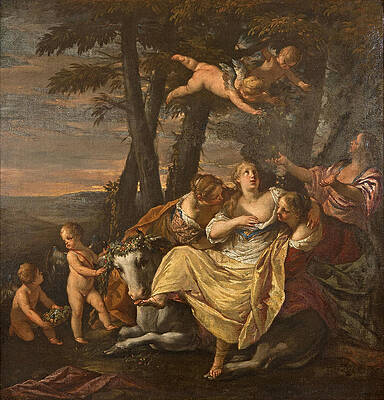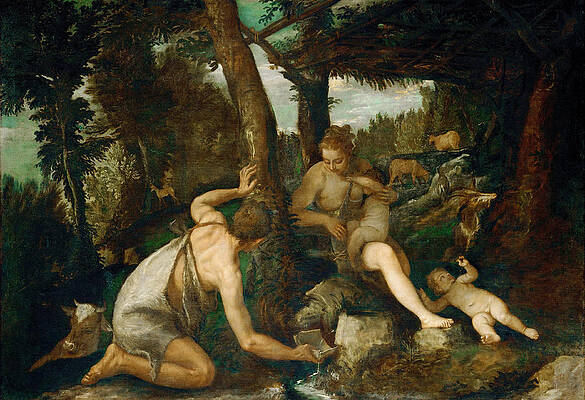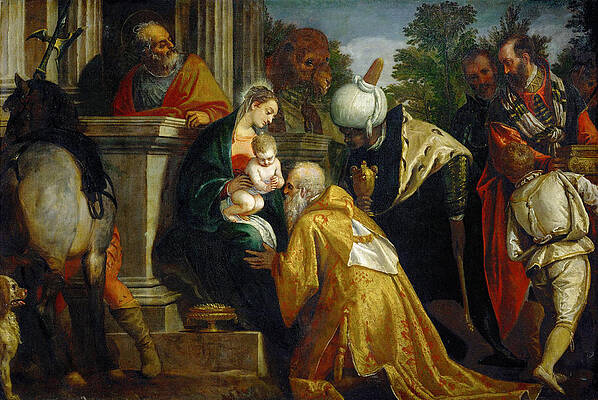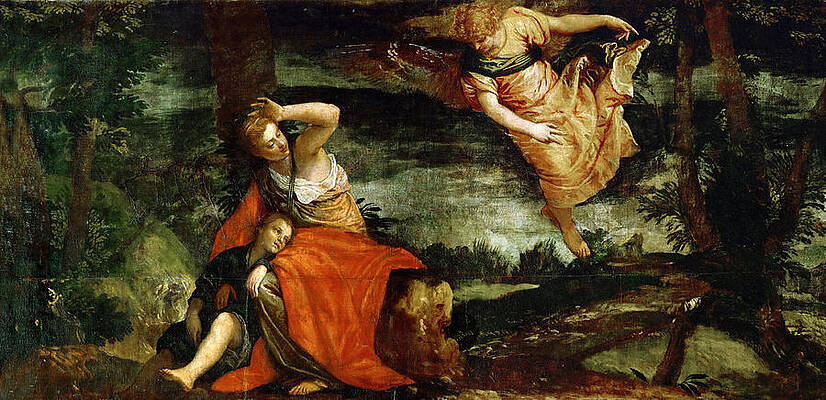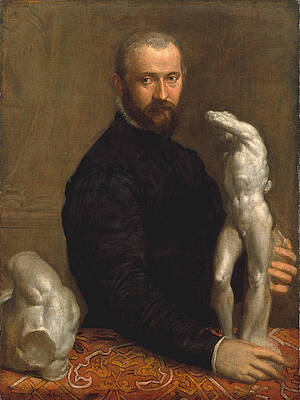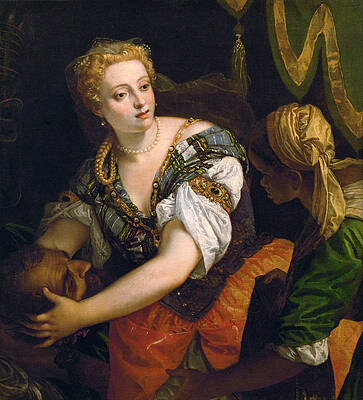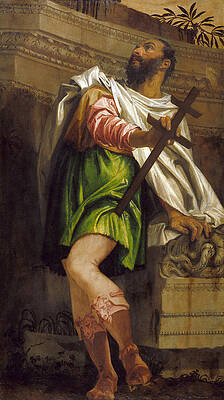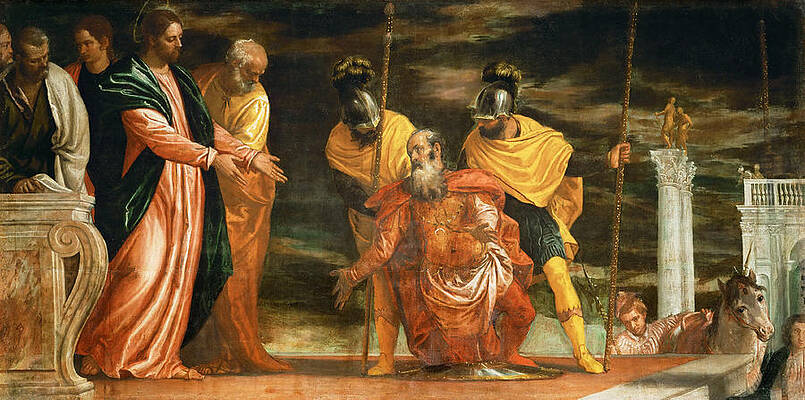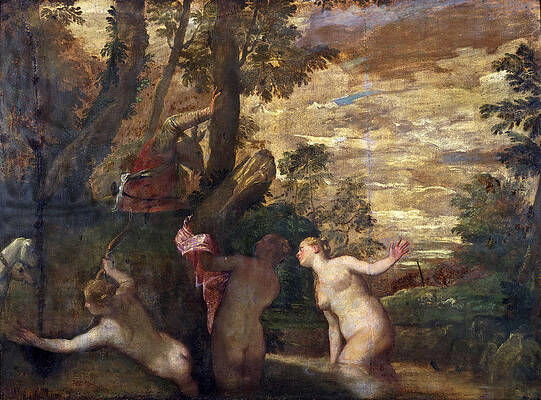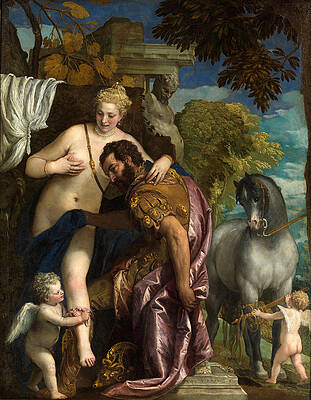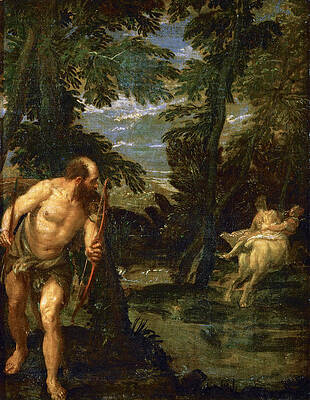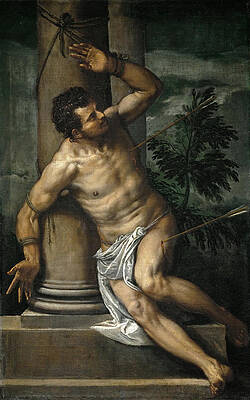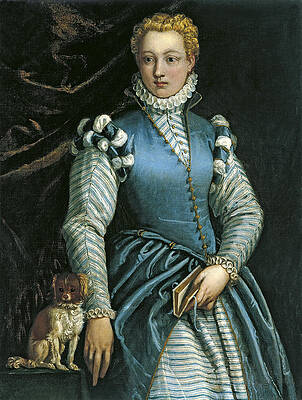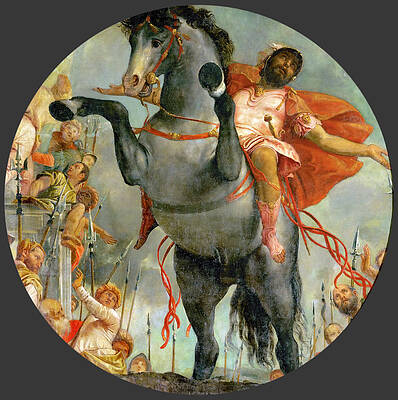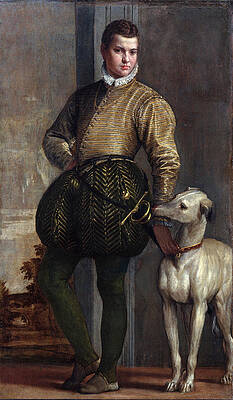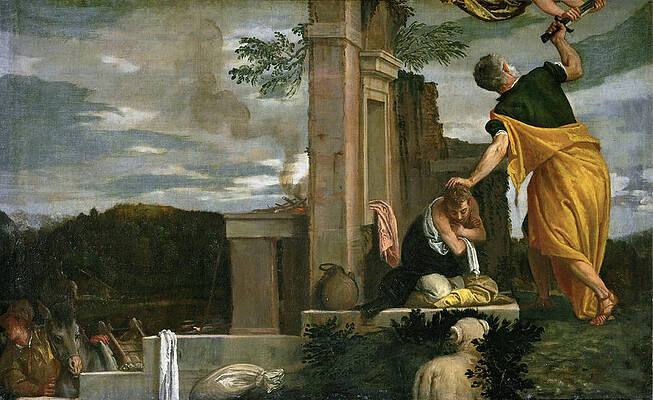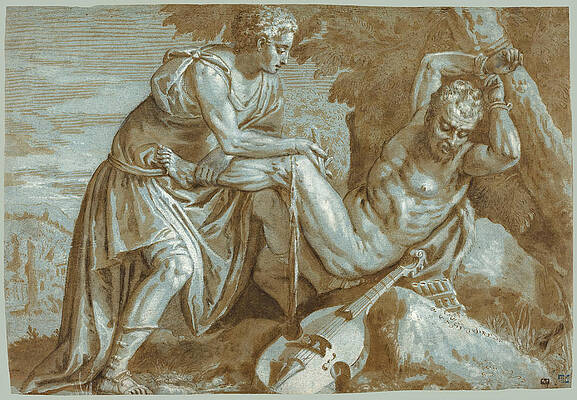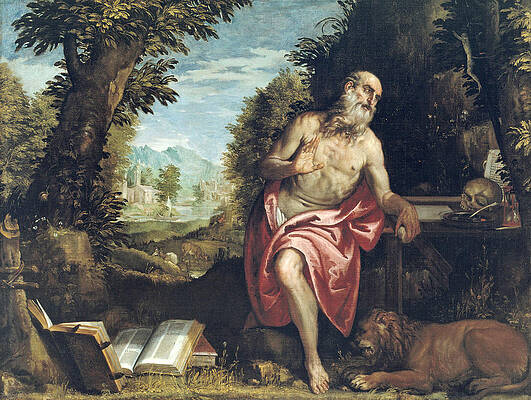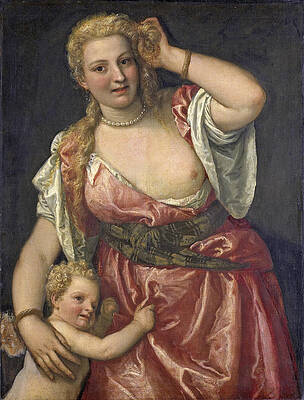Paolo Veronese
Paintings
Allegory of Navigation with an Astrolabe. Ptolemy
Jesus Healing the Woman with the Issue of Blood
Christ addressing a Kneeling Woman
Portrait of Countess Livia da Porto Thiene and her Daughter Deidamia
Happy Union
The Madonna of the Cuccina Family
Esther before Ahasuerus
The Adoration of the Kings
Scorn
Respect
Christ and the Samaritan Woman at the Well
The Resurrection of Christ
The family of Cain wandering
Portrait of Agostino Barbarigo
Saint Jerome in the Wilderness
The Creation of Eve
Saint Jerome meditating
Saint Catherine
Jesus Among The Doctors
Susanna and the Elders
The Rape of Europa
The Dream of Saint Helena
Saint Lucy and a Donor
The Rest on the Return from Egypt
The Baptism of Christ
The Annunciation
The Annunciation 2
The Annunciation 4
Saint Catherine of Alexandria in Prison
The adulteress
The Rape of Europa
Lady with Heron
Adam and Eve after the expulsion from paradise
The Adoration of the Magi
The angel appears to Hagar in the desert
Alessandro Vittoria
Judith with the Head of Holofernes
Allegory of Navigation with a Cross-Staff. Averroes
The Dead Christ Supported by an Angel and Adored by a Franciscan
Jesus healing the servant of a Centurion
The Anointment of David
Diana and Actaeon
Lucretia
Mars and Venus United by Love
Hercules Deianira and the Centaur Nessus
Saint Sebastian
Portrait of a Woman with a dog
The sacrificial death of Marcus Curtius
Boy with a Greyhound
The Sacrifice of Isaac

Allegory of Navigation with an Astrolabe Ptolemy

The Angel Appears To Hagar In The Desert
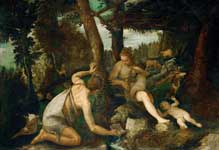
Adam and Eve after the expulsion from paradise
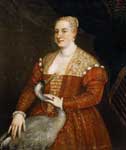
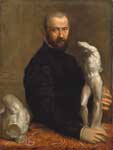
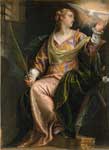
Saint Catherine of Alexandria in Prison
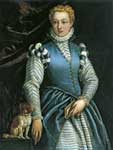
Portrait of a Woman with a dog
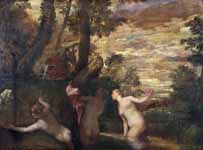

The Consecration of Saint Nicholas

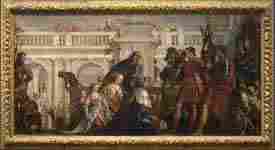
The Family of Darius before Alexander
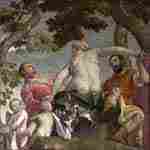

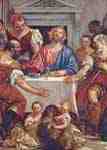
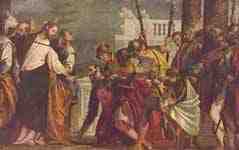
Christ and the Centurion of Capernaum

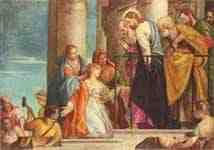
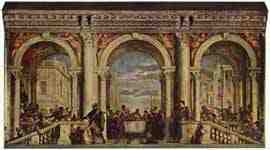
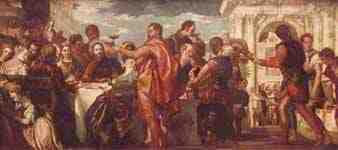
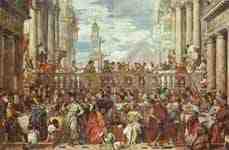
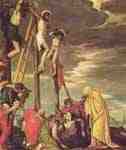
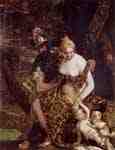
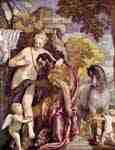
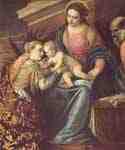
Mystic Marriage of St. Catherine

Mystic Marriage of St. Catherine
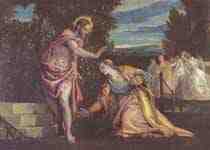
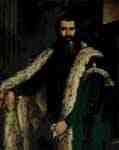
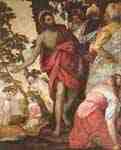
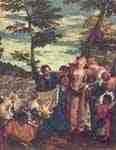
Rescue of Moses from the waters of the Nile
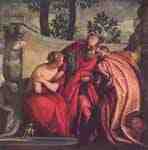
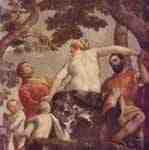
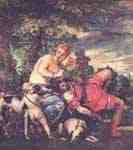
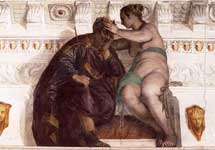
Chance Crowning a Sleeping Man
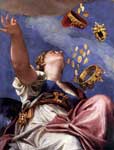
Juno Showering Gifts on Venetia
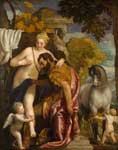

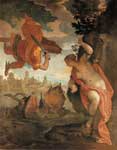
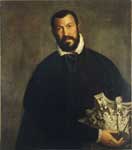
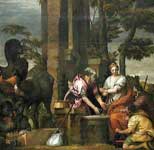
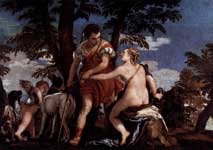
Drawings
The Mystic Marriage of Saint Catherine and other studies
Apollo and Marsyas
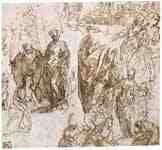

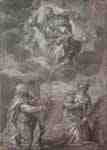





Sketch sheet: a woman, book, shell and rod holding
Workshop of Paolo Veronese
Saint Jerome in the Wilderness
Venus and Cupid
Fine Art Prints | Greeting Cards | iPhone Cases | Tote Bags | Clothing | Lifestyle | Beach ...
Jesus Healing the Woman with the Issue of Blood
Paolo Caliari, known as Paolo Veronese (1528 – 19 April 1588) was an Italian Renaissance painter based in Venice, most famous for large history paintings of both religious and mythological subjects, such as The Wedding at Cana and The Feast in the House of Levi. With Titian, who was at least a generation older, and Tintoretto, ten years older, he was one of the "great trio that dominated Venetian painting of the cinquecento" or 16th-century late Renaissance.[1] Veronese is known as a supreme colorist, and after an early period with Mannerist influence turned to a more naturalist style influenced by Titian.[2]
His most famous works are elaborate narrative cycles, executed in a dramatic and colorful style, full of majestic architectural settings and glittering pageantry. His large paintings of biblical feasts, crowded with figures, painted for the refectories of monasteries in Venice and Verona are especially famous, and he was also the leading Venetian painter of ceilings.
He has always been appreciated for "the chromatic brilliance of his palette, the splendor and sensibility of his brushwork, the aristocratic elegance of his figures, and the magnificence of his spectacle", but his work has been felt "not to permit expression of the profound, the human, or the sublime", and of the "great trio" he has often been the least appreciated by modern criticism.[1] Nonetheless, "many of the greatest artists ... may be counted among his admirers, including Rubens, Watteau, Tiepolo, Delacroix and Renoir".[3]
ife and work
Birth and names
Veronese took his usual name from his birthplace of Verona, then the largest possession of Venice on the mainland. The census in Verona attests that Veronese was born sometime in 1528 to a stonecutter, or spezapreda, named Gabriele, and his wife Catherina. He was their fifth child.[4] It was common for surnames to be taken from a father's profession, and thus Veronese was known as Paolo Spezapreda. He later changed his name to Paolo Caliari, because his mother was the illegitimate daughter of a nobleman called Antonio Caliari.[5] His earliest known painting is signed "P. Caliari F., "the first known instance in which he used this surname", and after using "Paolo Veronese" for several years in Venice, after about 1575 he resumed signing his paintings as "Paolo Caliari".[5] He was often called "Paolo Veronese" before the last century to distinguish him from another painter from Verona, "Alessandro Veronese", now known as Alessandro Turchi (1578–1649).[6]
Youth
By 1541, Veronese was apprenticed with Antonio Badile, who was later to become his father-in-law, and in 1544 was an apprentice of Giovanni Francesco Caroto; both were leading painters in Verona.[5] An altarpiece painted by Badile in 1543 includes striking passages that were most likely the work of his fifteen-year-old apprentice; Veronese's precocious gifts soon surpassed the level of the workshop, and by 1544 he was no longer residing with Badile.[7] Although trained in the culture of Mannerism then popular in Parma, he soon developed his own preference for a more radiant palette.[8]
In his late teens he painted works for important churches in Verona, and in 1551 he was commissioned by the Venetian branch of the important Giustiniani family to paint the altarpiece for their chapel in the church of San Francesco della Vigna, which was then being entirely rebuilt to the design of Jacopo Sansovino. In the same year he worked on the decoration of the Villa Soranzo near Treviso, with his fellow Veronese Giovanni Battista Zelotti and Anselmo Canneri; only fragments of the frescos remain, but they seem to have been important in establishing his reputation. The description by Carlo Ridolfi nearly a century later mentions that one of the mythological subjects was The Family of Darius before Alexander, the rare subject in Veronese's grandest treatment of secular history, now in the National Gallery, London.[9]
In 1552 Cardinal Ercole Gonzaga, great-uncle of the ruling Guglielmo Gonzaga, Duke of Mantua, commissioned an altarpiece for Mantua Cathedral (now Caen, France), which Veronese painted in situ. He doubtless used his time in Mantua to study the ceilings by Giulio Romano; it was a painter of ceiling frescos that he would initially make his mark in Venice, where he based himself permanently from the following year.[10]
Venice
Veronese moved to Venice in 1553 after obtaining his first state commission, ceilings in fresco decorating the Sala dei Cosiglio dei Dieci (the Hall of the Council of Ten) and the adjoining Sala dei Tre Capi del Consiglio in the Doge's Palace, in the new rooms replacing those lost in the fire of 1547. His panel of Jupiter Expelling the Vices for the former is now in the Louvre. He then painted a History of Esther in the ceiling for the church of San Sebastiano (1556–57). It was these ceiling paintings and those of 1557 in the Marciana Library (for which he was awarded a prize judged by Titian and Sansovino) that established him as a master among his Venetian contemporaries.[11] Already these works indicate Veronese's mastery in reflecting both the subtle foreshortening of the figures of Correggio and the heroism of those by Michelangelo.[12]
Villa Barbaro and refectory paintings
By 1556 Veronese was commissioned to paint the first of his monumental banquet scenes, the Feast in the House of Simon, which would not be concluded until 1570. Owing to its scattered composition and lack of focus, however, it was not his most successful refectory mural.[13] In the late 1550s, during a break in his work for San Sebastiano, Veronese decorated the Villa Barbaro in Maser, a newly finished building by the architect Andrea Palladio. The frescoes were designed to unite humanistic culture with Christian spirituality; wall paintings included portraits of the Barbaro family,[14] and the ceilings opened to blue skies and mythological figures. Veronese's decorations employed complex perspective and trompe l'oeil, and resulted in a luminescent and inspired visual poetry.[15] The encounter between architect and artist was a triumph.[16]
The Wedding at Cana, 1562–1563. Louvre
The Wedding at Cana, painted in 1562–1563, was also collaboration with Palladio. It was commissioned by the Benedictine monks for the San Giorgio Maggiore Monastery, on a small island across from Saint Mark's, in Venice. The contract insisted on the huge size (to cover 66 square meters), and that the quality of pigment and colors should be of premium quality. For example, the contract specified that the blues should contain the precious mineral lapis-lazuli.([17]) The contract also specified that the painting should include as many figures as possible. There are a number of portraits (including those of Titian and Tintoretto, as well as a self-portrait of Veronese) staged upon a canvas surface nearly ten meters wide. The scene, taken from the New Testament Book of John, II, 1–11, represents the first miracle performed by Jesus, the making of wine from water, at a marriage in Cana, Galilee. The foreground celebration, a frieze of figures painted in the most shimmering finery, is flanked by two sets of stairs leading back to a terrace, Roman colonnades, and a brilliant sky.[15]
In the refectory paintings, as in The Family of Darius before Alexander (1565–1570),[18] Veronese arranged the architecture to run mostly parallel to the picture plane, accentuating the processional character of the composition. The artist's decorative genius was to recognize that dramatic perspectival effects would have been tiresome in a living room or chapel, and that the narrative of the picture could best be absorbed as a colorful diversion.[19] These paintings offer little in the representation of emotion; rather, they illustrate the carefully composed movement of their subjects along a primarily horizontal axis. Most of all they are about the incandescence of light and color.[20] The exaltation of such visual effects may have been a reflection of the artist's personal well-being, for in 1565 Veronese married Elena Badile, the daughter of his first master, and by whom he would eventually have a daughter and four sons.[20]
Also painted between 1565–70 is his Madonna and Child with St. Elizabeth, the Infant St. John the Baptist, and St. Justina in the Timken Museum of Art, San Diego. St. Justina, a patroness of Padua and Venice, is at the right with the Blessed Virgin Mother and the Christ child in the center. In contrast to Italian works of a century earlier the infant is rendered convincingly as an infant. What makes one stop and take notice in this painting is the infant's reaching out to St. Justina, since a baby of this age would normally limit his gaze to his mother. Completing the work is St. Elizabeth, the cousin of Mary and mother of St. John the Baptist, located on the left. The artist delicately balances the forms of the extended Holy Family and renders them using a superb balance of warm and cool colors.
The House of Levi
The Feast in the House of Levi (1573), one of the largest canvases of the 16th century, which led to an investigation by the Roman Catholic Inquisition and its renaming
In 1573 Veronese completed the painting which is now known as The Feast in the House of Levi for the rear wall of the refectory of the Basilica di Santi Giovanni e Paolo. The painting originally was intended as a depiction of the Last Supper. It was designed to replace a canvas by Titian that had been lost in a fire. It measured more than five metres high and more than twelve metres wide, depicted another Venetian celebration, and was a culmination of his banquet scenes, which this time included not only the Last Supper, but also German soldiers, comic dwarves, and a variety of animals: in short, the exotica which were standard to his narratives.[21] Even as Veronese's use of color attained greater intensity and luminosity, his attention to narrative, human sentiment, and a more subtle and meaningful physical interplay between his figures became evident.[22]
That the subject was indeed the Last Supper, but greatly exceeded most interpretations to that time, was not lost on the Inquisition. A decade earlier the monks who commissioned the Wedding at Cana had requested that the artist squeeze the maximum number of figures into their painting, but the Counter-Reformation had since exerted its influence in Venice, and in July 1573, Veronese was summoned to explain the inclusion of what they considered extraneous and indecorous details in the painting.[23]
The tone of the hearing was cautionary rather than punitive (see below for the transcript); Veronese explained that "we painters take the same liberties as poets and madmen", and rather than repaint the picture as he was ordered to do by the tribunal, he simply and pragmatically retitled it to the less sacramental title by which it is known today.[24] That this sufficed "suggests the strength of the patrician support (though this is not recorded) upon which he could rely".[3]
Assessment
Perseus and Andromeda, 1576-78
Veronese was included in the second edition of 1568 of Vasari's Lives, for which Vasari travelled to Venice in an attempt to improve the Florentine bias of his first edition in 1550. A fuller biography had to await Carlo Ridolfi's work of 1646, later included in his 1648 compilation on the Venetian painters. This remains "by far the most important source for our knowledge of his art".[3] Ridolfi wrote of the Feast in the House of Levi that it "gave rein to joy, made beauty majestic, made laughter itself more festive."[22]
A modern assessment of Veronese's achievement by Sir Lawrence Gowing reads:
The French had no doubts, as the critic Théophile Gautier wrote in 1860, that Veronese was the greatest colorist who ever lived—greater than Titian, Rubens, or Rembrandt because he established the harmony of natural tones in place of the modeling in dark and light that remained the method of academic chiaroscuro. Delacroix wrote that Veronese made light without violent contrasts, "which we are always told is impossible, and maintained the strength of hue in shadow.
This innovation could not be better described. Veronese's bright outdoor harmonies enlightened and inspired the whole nineteenth century. He was the foundation of modern painting. But whether his style is in fact naturalistic, as the Impressionists thought, or a more subtle and beautiful imaginative invention must remain a question for each age to answer for itself.[25]
Working practices
See also Category:Paintings by Paolo Veronese
In addition to the ceiling creations and wall paintings, Veronese also produced altarpieces (The Consecration of Saint Nicholas, 1561–2, London's National Gallery [26]), paintings on mythological subjects (Venus and Mars, 1578, New York Metropolitan Museum of Art [27]), and portraits (Portrait of a Lady, 1555, Louvre). A significant number of compositional sketches in pen, ink and wash, figure studies in chalk, and chiaroscuro modelli and ricordi survive.
He headed a family workshop, including his younger brother Benedetto (1538–98) as well as his sons Carlo and Gabriele, and his nephew Luigi Benfatto (also called dal Friso; 1559–1611), that remained active for a decade or so after his death in Venice in 1588, signing their work "Haeredes Pauli" ("Heirs of Paolo"), and continuing to use his drawings. According to Nicholas Penny, "The role of the workshop seems to have increased steadily, and after 1580 it is rare that we can feel confident that Veronese's was the sole hand involved".[3] Among his pupils were his contemporary Giovanni Battista Zelotti and later, Giovanni Antonio Fasolo, Sigismondo de Stefani, and Anselmo Canneri.[28] The Caliari family continued and another Paolo Caliari published the first monograph on his ancestor in 1888.[3]
Veronese was one of the first painters whose drawings were sought by collectors during his lifetime.[29]
Transcript of the 1573 Inquisition hearing
Images on the right show the start of the five page transcript of Paolo Veronese's evidence from July 1573:[30]
Cover of Veronese Inquisition Transcript from 1573
Transcript of Veronese Inquisition page1
Veronese Inquisition of 1573 Transcript Page 4
This English translation by Charles Yriarte from the Italian is taken from Francis Marion Crawford's Salve Venetia (New York, 1905. Vol. II: 29-34):
"This day, July eighteenth, 1573. Called to the Holy Office before the sacred tribunal, Paolo Galliari Veronese residing in the parish of Saint Samuel, and being asked as to his name and surname replied as above.
Being asked as to his profession:
Answer. I paint and make figures.
Question. Do you know the reasons why you have been called here?
A. No.
Q. Can you imagine what those reasons may be?
A. I can well imagine.
Q. Say what you think about them.
A. I fancy that it concerns what was said to me by the reverend fathers, or rather by the prior of the monastery of San Giovanni e Paolo, whose name I did not know, but who informed me that he had been here, and that your Most Illustrious Lordships had ordered him to cause to be placed in the picture a Magdalen instead of the dog; and I answered him that very readily I would do all that was needful for my reputation and for the honor of the picture; but that I did not understand what this figure of the Magdalen could be doing here; and this for many reasons, which I will tell, when occasion is granted me to speak.
Q. What is the picture to which you have been referring?
A. It is the picture which represents the Last Supper of Jesus Christ with His disciples in the house of Simon.
Q. Where is this picture?
A. In the refectory of the monks of San Giovanni e Paolo.
Q. Is it painted in fresco or on wood or on canvas?
A. It is on canvas.
Q. How many feet does it measure in height?
A. It may measure seventeen feet.
Q. And in breadth?
A. About thirty-nine.
Q. How many have you represented? And what is each one doing?
A. First there is the innkeeper, Simon; then, under him, a carving squire whom I supposed to have come there for his pleasure, to see how the service of the table is managed. There are many other figures which I cannot remember, however, as it is a long time since I painted that picture.
Q. Have you painted other Last Suppers besides that one?
A. Yes.
Q. How many have you painted? Where are they?
A. I painted one at Verona for the reverend monks of San Lazzaro; it is in their refectory. Another is in the refectory of the reverend brothers of San Giorgio here in Venice.
Q. But that one is not a Last Supper, and is not even called the Supper of Our Lord.
A. I painted another in the refectory of San Sebastiano in Venice, another at Padua for the Fathers of the Maddalena. I do not remember to have made any others.
Q. In this Supper which you painted for San Giovanni e Paolo, what signifies the figure of him whose nose is bleeding?
A. He is a servant who has a nose-bleed from some accident.
Q. What signify those armed men dressed in the fashion of Germany, with halberds in their hands?
A. It is necessary here that I should say a score of words.
Q. Say them.
A. We painters use the same license as poets and madmen, and I represented those halberdiers, the one drinking, the other eating at the foot of the stairs, but both ready to do their duty, because it seemed to me suitable and possible that the master of the house, who as I have been told was rich and magnificent, would have such servants.
Q. And the one who is dressed as a jester with a parrot on his wrist, why did you put him into the picture?
A. He is there as an ornament, as it is usual to insert such figures.
Q. Who are the persons at the table of Our Lord?
A. The twelve apostles.
Q. What is Saint Peter doing, who is the first?
A. He is carving the lamb in order to pass it to the other part of the table.
Q. What is he doing who comes next?
A. He holds a plate to see what Saint Peter will give him.
Q. Tell us what the third is doing.
A. He is picking his teeth with a fork.
Q. And who are really the persons whom you admit to have been present at this Supper?
A. I believe that there was only Christ and His Apostles; but when I have some space left over in a picture I adorn it with figures of my own invention.
Q. Did some person order you to paint Germans, buffoons, and other similar figures in this picture?
A. No, but I was commissioned to adorn it as I thought proper; now it is very large and can contain many figures.
Q. Should not the ornaments which you were accustomed to paint in pictures be suitable and in direct relation to the subject, or are they left to your fancy, quite without discretion or reason?
A. I paint my pictures with all the considerations which are natural to my intelligence, and according as my intelligence understands them.
Q. Does it seem suitable to you, in the Last Supper of our Lord, to represent buffoons, drunken Germans, dwarfs, and other such absurdities?
A. Certainly not.
Q. Then why have you done it?
A. I did it on the supposition that those people were outside the room in which the Supper was taking place.
Q. Do you not know that in Germany and other countries infested by heresy, it is habitual, by means of pictures full of absurdities, to vilify and turn to ridicule the things of the Holy Catholic Church, in order to teach false doctrine to ignorant people who have no common sense?
A. I agree that it is wrong, but I repeat what I have said, that it is my duty to follow the examples given me by my masters.
Q. Well, what did your masters paint? Things of this kind, perhaps?
A. In Rome, in the Pope's Chapel, Michelangelo has represented Our Lord, His Mother, St. John, St. Peter, and the celestial court; and he has represented all these personages nude, including the Virgin Mary, and in various attitudes not inspired by the most profound religious feeling.
Q. Do you not understand that in representing the Last Judgment, in which it is a mistake to suppose that clothes are worn, there was no reason for painting any? But in these figures what is there that is not inspired by the Holy Spirit? There are neither buffoons, dogs, weapons, nor other absurdities. Do you think, therefore, according to this or that view, that you did well in so painting your picture, and will you try to prove that it is a good and decent thing?
A. No, my most Illustrious Sirs; I do not pretend to prove it, but I had not thought that I was doing wrong; I had never taken so many things into consideration. I had been far from imaging such a great disorder, all the more as I had placed these buffoons outside the room in which Our Lord was sitting.
These things having been said, the judges pronounced that the aforesaid Paolo should be obliged to correct his picture within the space of three months from the date of the reprimand, according to the judgments and decision of the Sacred Court, and altogether at the expense of the said Paolo.
'Et ita decreverunt omni melius modo.' (And so they decided everything for the best!)" [31]
The controversy surrounding the painting, and its creative resolution, were echoed in the Monty Python comedy sketch in which the Pope summoned a fictional Michelangelo to account for his version of the Last Supper featuring a kangaroo, 28 disciples, and 3 Christs. In the sketch, the artist optimistically offers to solve the difficulty by retitling his work The Penultimate Supper.
Veronese in popular culture
The Monty Python sketch "The Last Supper" from Monty Python Live at the Hollywood Bowl is based on the story of Veronese's painting The Feast in the House of Levi.
An imaginary Veronese painting called "La Morte dil Cesare" is prominently featured in a story arc of the award winning comics series 100 Bullets.
Veronese in religion
In the Ascended Master Teachings of Elizabeth Clare Prophet, Paolo Veronese is regarded as one of the earthly embodiments of one of the ascended masters, a group of beings guiding the spiritual destiny of the planet Earth and its people. Specifically, he is regarded as the Master Paul the Venetian, Master of the Third Ray.[32]
Notes
Rosand, 107
Freedburg, 550-551
Penny, 333
Pedrocco, Filippo: "Veronese", page 3. SCALA Group S.p.A., 1998.
Penny, 331
Penny, 333 Note 1
Rearick, page 20, 1988.
Bussagli, Marco: "The XVI Century", Italian Art, page 206. Giunti Gruppo Editoriale, 2000.
Penny, 331, 379
Penny, 331; Freedberg, 551 and passim in the following pages on the influence of Romano.
Penny, 331; Dunkerton, Jill, et al.: Durer to Veronese: Sixteenth-Century Painting in the National Gallery, page 125. National Gallery Publications, 1999.
Rearick, page 50, 1998.
Rearick, page 75, 1988.
The Portrait of Daniele Barbaro, painted 1566–67, entered the collection of the Rijksmuseum in Amsterdam in 1952. Veronese: Gods, Heroes and Allegories, De Vecchi, Pierluigi, pages 104–5. Rizzoli, 2004.
Rearick, page 10, 1998.
Bussagli, page 207, 2000.
Louvre 1993
United Kingdom. "File:The Family of Darius before Alexander by Paolo Veronese 1570.jpg - Wikimedia Commons". Commons.wikimedia.org. Retrieved 2014-04-28.
Dunkerton, et al., page 111, 1999.
Rearick, page 13, 1988.
Dunkerton, et al., page 30, 1999.
Rearick, page 14, 1988.
Rearick, page 104, 1988.
Rearick, page 104, 1988. Transcript of the hearing
Gowing, Lawrence: Paintings in the Louvre, page 262. Stewart, Tabori & Chang, 1987.
"Paolo Veronese | The Consecration of Saint Nicholas | NG26 | The National Gallery, London". Nationalgallery.org.uk. Retrieved 2014-04-28.
"Paolo Veronese (Paolo Caliari): Mars and Venus United by Love (10.189) | Heilbrunn Timeline of Art History | The Metropolitan Museum of Art". Metmuseum.org. 2013-09-04. Retrieved 2014-04-28.
*Bernasconi, Cesare (1864). Painting Studi sopra la storia della pittura italiana dei secoli xiv e xv e della scuola pittorica veronese dai medi tempi fino tutto il secolo xviii. Googlebooks. pp. 337–338, 343.
Eisler, Colin: Masterworks in Berlin: A City's Paintings Reunited, page 270. Little, Brown and Company, 1996.
The document is at: Santo Uffizio (Holy Office) Busto No. 33 in the Archivio di Stato di Venezia
Crawford, Francis Marion: "Salve Venetia". New York, 1905. Vol. II: pages 29-34.
Prophet, Mark L., and Prophet, Elizabeth Clare, (2003).The Masters and Their Retreats. Summit University Press. p. 274. ISBN 0972040242.
References
Freedberg, Sydney J. (1993). Pelican History of Art, ed. Painting in Italy, 1500–1600. Penguin Books Ltd. pp. 550–60.
Penny, Nicholas, National Gallery Catalogues (new series): The Sixteenth Century Italian Paintings, Volume II, Venice 1540-1600, 2008, National Gallery Publications Ltd, ISBN 1857099133
Rearick, W. R.: The Art of Paolo Veronese 1528–1588, National Gallery of Art, 1988
Rosand, David, Painting in Sixteenth-Century Venice: Titian, Veronese, Tintoretto, 2nd ed 1997, Cambridge UP ISBN 0521565685
Watson, Peter; Wisdom and Strength, the Biography of a Renaissance Masterpiece, Hutchinson, 1990, ISBN 009174637X
----
Fine Art Prints | Greeting Cards | Phone Cases | Lifestyle | Face Masks | Men's , Women' Apparel | Home Decor | jigsaw puzzles | Notebooks | Tapestries | ...
----
Artist
A - B - C - D - E - F - G - H - I - J - K - L - M -
N - O - P - Q - R - S - T - U - V - W - X - Y - Z
Retrieved from "http://en.wikipedia.org/"
All text is available under the terms of the GNU Free Documentation License


